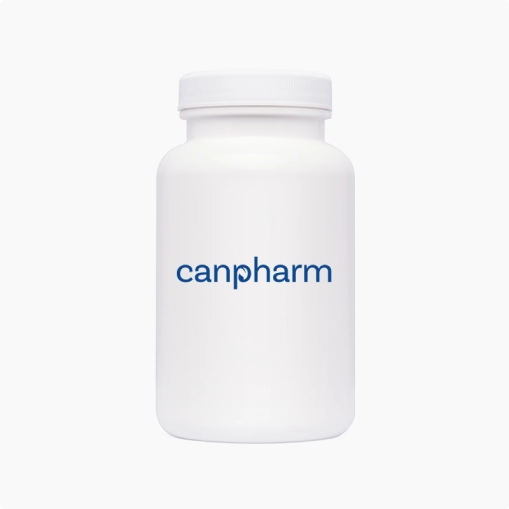
Zolinza (Vorinostat)
| Dose | Size & Price | Qty |
|---|
-
Description
-
Reviews (0)
-
Related Products
-
Related Conditions
Fact Table
| Fact Table | |
|---|---|
| Formula | C14H20N2O3 |
| License | FDA approved |
| Bioavailability | 1.8–11% |
| Legal status | Prescription drug |
| Chemical Name | Vorinostat |
| Elimination half-life | 2 hours |
| Dosage (Strength) | 100mg |
| Pregnancy | Consult a doctor |
| Brands | Zolinza |
| Protein binding | 90% |
| PubChem CID | 5311 |
| MedlinePlus | a607050 |
| ChEBI | 45716 |
| ATC code | L01XH01 |
| DrugBank | DB02546 |
| KEGG | D06320 |
| Routes of administration | Oral (capsules) |
Zolinza (Vorinostat) is a prescription medication that belongs to a class of drugs known as histone deacetylase (HDAC) inhibitors. It is primarily used in the treatment of a specific type of cancer called cutaneous T-cell lymphoma (CTCL) that affects the skin.
When planning to buy Zolinza as a treatment option for cutaneous T-cell lymphoma, it is crucial to consider factors such as effectiveness, potential side effects, and Zolinza cost.
What is cutaneous T-cell lymphoma (CTCL)?
Cutaneous T-cell lymphoma (CTCL), a rare form of cancer, specifically targets the skin as its primary site. It starts in white blood cells called T-cells, which are part of the immune system. CTCL causes skin lesions, redness, itching, and other symptoms. The cause of CTCL is not fully known, but factors like weakened immune systems, exposure to certain substances, and genetics may play a role.
Directions
The recommended dose for Zolinza capsules is 400 mg taken orally once daily with food.
It is important not to open or crush Zolinza capsules.
Dose modifications may be necessary in certain situations:
- If a patient experiences intolerance to the therapy, the dose may be reduced to 300 mg taken orally once daily with food.
- In certain situations, the prescribed dose of Zolinza may be decreased to 300 mg taken orally once daily with food for five consecutive days each week.
This medication can cause dehydration. Drink a minimum of 8 glasses of water throughout the day.
Ingredients
Vorinostat is the active ingredient in Zolinza.
Cautions
Inform your doctor about your medical history and any allergies you may have before you buy Zolinza.
This medication can make you feel dizzy. If you drink alcohol or use cannabis, it can make the dizziness worse. Until you feel better, avoid driving, operating machinery, or doing activities that need you to be alert.
If the medicine inside the capsule meets your eyes, mouth, nose, or skin, it can be harmful. In such cases, it is important to promptly wash the affected area with soap and water. If it gets in your eyes, rinse them thoroughly with water.
Zolinza can affect the heart rhythm, leading to a condition called QT prolongation that causes serious symptoms like irregular heartbeat and fainting, which require immediate medical attention.
Insufficient levels of potassium or magnesium in your bloodstream can also elevate the likelihood of QT prolongation.
Do not use Zolinza if you are pregnant or breastfeeding.
Interactions
Zolinza 100 mg could have negative drug interactions with warfarin and valproic acid.
Side Effects
Zolinza may cause various side effects. Common side effects include fatigue, nausea, diarrhea, loss of appetite, changes in taste, constipation, headache, hair loss, dizziness, insomnia, or skin reactions. If you have any other severe side effects, talk to your doctor promptly.
Frequently Asked Questions about Zolinza
What is Zolinza used for?
Zolinza is used primarily in the treatment of a specific type of cancer called cutaneous T-cell lymphoma (CTCL) that affects the skin. It is prescribed when other treatments have not been effective or have stopped working. The goal of Zolinza treatment is to control symptoms, slow down the progression of CTCL, and improve the quality of life for individuals with this condition.
What class of drug is Zolinza?
Zolinza belongs to the class of drugs known as histone deacetylase (HDAC) inhibitors. These medications interfere with the activity of enzymes called histone deacetylases, affecting gene expression and cellular processes. Zolinza specifically targets HDAC enzymes and is used for the treatment of cutaneous T-cell lymphoma (CTCL).
What is the dosing for Zolinza?
The typical starting dose for Zolinza is 400 mg taken orally once daily with food. Dosing may be adjusted by your healthcare provider based on your response and any side effects. It is important to follow your prescribed schedule and consult your doctor for any dosage changes.
What are the side effects of the drug Zolinza?
Side effects of Zolinza may include fatigue, nausea, diarrhea, loss of appetite, changes in taste, constipation, headache, dizziness, insomnia, and skin reactions like rashes or itching. It is important to note that individual experiences may vary, and there can be other less common or more serious side effects. Consult your doctor if you have any concerns about the side effects of Zolinza.
What is the generic name for Zolinza?
The generic name for the medication Zolinza is Vorinostat. Vorinostat is the non-proprietary or chemical name used to identify the active ingredient in Zolinza.
